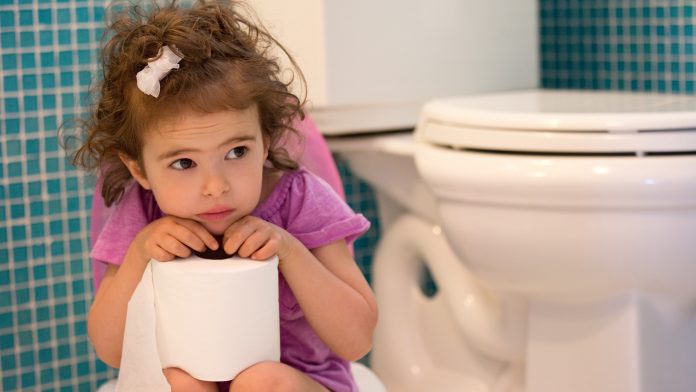
Everything You Should Know about Constipation in Children (Part One)
In today’s post, we will discuss a very common problem; constipation in children. In this case, we will review the causes that can trigger lack of evacuation in children and the treatments available to resolve it. We will offer a series of tips for maintaining good hygiene and diet that promote increased bowel movements. Read on.
Constipation is a symptomatic process mainly due to poor dietary and hygienic habits. In children, it is essential to establish treatment as early as possible to prevent constipation from becoming a chronic disorder and persisting into adulthood. The advantage of this is that children normally respond better and faster than adults to dietary therapy.
Definition and Prevalence
Constipation is defined as the retention of fecal matter. This retention is manifested by a situation where the frequency of bowel movements is lower than normal. It also refers to a difficulty in defecating, as well as the permanent sensation of incomplete evacuation, although the frequency of stools is normal.
The Pooping Rate
Constipation in childhood is difficult to define because of the difficulty in establishing normal stool frequency at this stage. This frequency decreases from an average of 4 stools per day in the first week of life to 1.7 per day at two years of age.
Babies’ bowel processes depend largely on their diet. Those who are fed only breast milk will have increasingly liquid stools. On the other hand, those who are fed formula will have firmer, less frequent stools. A baby under 6 months of age should have at least one bowel movement a day. From the age of two, children can have one or two bowel movements a day. In summary, the rate of deposition in childhood varies with age.
Generally, constipation is caused by a build-up of hard, dry stool in the descending colon. The formation of stool with low water content that progresses slowly through the large intestine is the result of a process of water reabsorption throughout the colon. Water reabsorption is caused by a movement of ions (sodium and chloride) across the intestinal membrane. The longer the stool is retained, the more water is reabsorbed and the harder the stool becomes. Dry, hard stools lead to painful evacuation and permanent distension of the rectal ampulla. This distension decreases the perception of the pressoreceptors (receptors sensitive to vasomotor stimuli) and the urge to defecate disappears. This triggers a vicious circle that prolongs the situation.
Constipation is a very common problem in childhood. It accounts for approximately 5% of pediatric primary care visits and over 25% of referrals to pediatric gastroenterology specialists.
Diagnosis
The diagnosis of childhood constipation can be made based on the appearance of the child’s stool (hard and dry) and the frequency of bowel movements, depending on age:
- Less than two stools per day in breastfed infants.
- Less than three stools per week in artificially fed infants (with adapted milk).
- Less than two or three stools per week in children and adolescents.
Causes
In 95% of cases, the etiology of constipation is of unknown origin. Constitutional, hereditary and psychological factors influence its occurrence. In some cases, this problem has been linked to intolerance to cow’s milk proteins.
In summary, constipation can be caused by organic problems or, more frequently, it can be functional constipation. Organic causes include the following:
- Obstructive disorders (congenital anal stenosis, microcolon, congenital or acquired colonic stenosis…).
- Neurological disorders (Hirschsprung’s disease, hyper and hypoganglionosis, cerebral palsy, spinal cord injury, etc.)
- Endocrine disorders (diabetes, hypo- and hyperthyroidism, etc.)
- Metabolic disorders (dehydration, hypercalcemia, hypokalemia, porphyria, lupus, etc.)
- Psychiatric disorders (anorexia and depression).
- Medications and toxic substances (hypervitaminosis D, codeine, laxative abuse, phenothiazides, iron and lead poisoning, etc.)
Causes of functional constipation may be due to:
- Lack of fiber in the diet.
- Insufficient intake of food, water and liquids.
- Excess of astringent foods: banana, rice, potatoes, foods rich in sugar (chocolate and sweets).
- Disorder in the hours to eat and snack between the main meals.
- Removal of the diaper that causes phobia when going to the bathroom.
- Attention deficit in the child.
- School tensions at the beginning of the course.
- Traumatic family events: death of a relative or change of house or city.
- Leading a busy and active life, which prevents the child from paying attention to his impulses to defecate.
- Irritable bowel syndrome.
There you go! You now know more about constipation in children, how to diagnose it and understand its causes. If you want to learn more about its treatments, come back to check the second part of our article. Does your child have constipation? How have you been dealing with it so far? Let us know in the comments below.
You May Also Like

4 Steps to Bath Baby
2022-10-18
Overweight and Obesity in Kids (Part 1)
2022-03-25

